The Sustainable Development Goals (SDGs), also known as the Global Goals, were adopted by the United Nations in 2015 as a universal call to action to end poverty, protect the planet, and ensure that by 2030 all people enjoy peace and prosperity. The 17 SDGs are integrated—they recognize that action in one area will affect outcomes in others, and that development must balance social, economic and environmental sustainability. Countries have committed to prioritize progress for those who're furthest behind. The SDGs are designed to end poverty, hunger, AIDS, and discrimination against women and girls. The creativity, knowhow, technology and financial resources from all of society is necessary to achieve the SDGs in every context.
calculate your ecological footprint
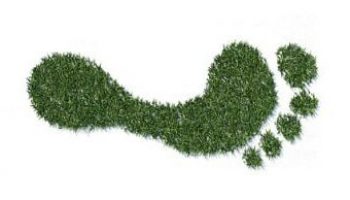
The Ecological Footprint of a person is calculated by adding up all of people’s demands that compete for biologically productive space, such as cropland to grow potatoes or cotton, or forest to produce timber or to sequester carbon dioxide emissions.
You can calculate your own ecological footprint from the link below.
CALCULATE
Call To Action
We need help for our existing sustainability efforts and ideas for new ones. Find out how exactly you can aid our effort.
F.A.Q
Questions that a lot of people have about the sustainability subject that you might be searching for an answer as well.
In 1987, the General Assembly of the United Nations (UN) made an urgent call for “a global agenda for change”. The World Commission on Environment and Development prepared the “Our Common Future” report - also known as the “Brundtland Report” with reference to the chair of the commission, Gro Harlem Brundtland, who championed the concept of sustainable development.
“Sustainable Development” was defined as “meeting the needs and aspirations of the present without compromising the ability to meet those of the future” in the Brundtland Report by the United Nations World Commission on Environment and Development (Brundtland Commission).
The concept of “Sustainable Development” recognizes the problems of poor people and less developed countries and highlights the important role of the developing countries to achieve “Sustainable Development” through inclusive economic growth and development - thereby reducing poverty and making the poor better off.
“Sustainable Development” is a holistic approach that covers economic development, social progress, and environmental protection and specifically emphasizes the elimination of poverty, preservation of the environment, and reduction in all inequalities throughout the world and within countries.
The “Sustainable Development Goals” (SDGs) were formulated by the United Nations (UN) in 2015 by taking the planetary boundaries into account. The United Nations defines “Sustainable Development Goals” as a call for action by all countries - regardless of their income levels - to conserve the planet and foster the well-being of people. The SDGs aim to ameliorate the living standards of all humans in the world and alleviate the climate change, environmental degradation, and destruction.
Concepts of economic growth and development, poverty and income inequality, human capital, environmental degradation and destruction, climate change, population growth, urbanization, migration, agricultural transformation, rural development, social progress, and partnerships for the application of appropriate policies to attain “Sustainable Development” are covered within the scope of the SDGs.
- Save energy
- Eat less meat, eat healthier
- Use reusable alternatives
- Go paperless
- Use renewable energy for electricity
- Recycle, upcycle, and reuse
- Grow your own produce
- Donate unused items and goods
- Save water
- Buy fair trade products
- Drive less, drive green
- Do not waste food
- Wear sustainable clothing and recyclable clothes
- Use eco-friendly cleaning products
- Think twice before shopping
- Make sure your big purchases have big environmental benefits
- Go “PlasticFree”
- Do not use products that endanger wildlife
- Pay attention to labels
- Be water wise, save water
- Switch heating source
- Green your home
- Choose Wild Energy
- Take Extinction Off Your Plate
- Choose to have a smaller family
- Use your voice and your vote
- Turn down the bag
- Buy only what you will use
- Buy second hand
- Don’t invest in idle equipment
- Buy products with less packaging
- Avoid disposable products
- Kick the bottled water habit
- Give new life to old electronics
- Upgrade to a green computer
- Invest in a clothesline
- Switch out your light bulbs
- Shut off lights
- Unplug electronics
- Turn off your computer
- Reinvest in heating and cooling
- Choose local and organic
- Stop throwing out food
- Compost
- Buy a cleaner car
- Drive efficiently
- Consider alternatives to air travel
- Green your school
- Involve the workforce
- Volunteer
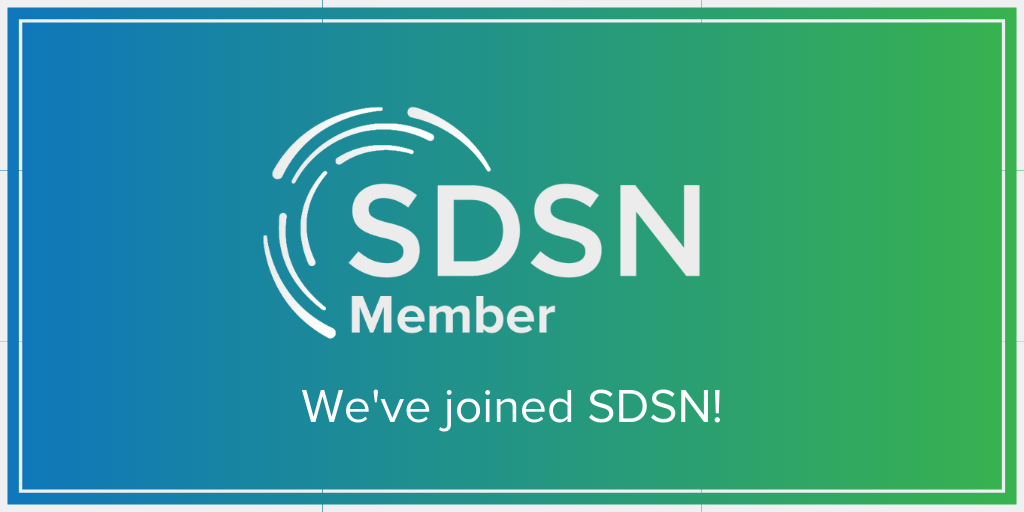
Yeditepe University is a proud member of the Sustainable Development Solutions Network, which is aimed to promote integrated approaches to implement the Sustainable Development Goals (SDGs) and the Paris Agreement on Climate Change, through education, research, policy analysis, and global cooperation.
WHAT IS SDSN?
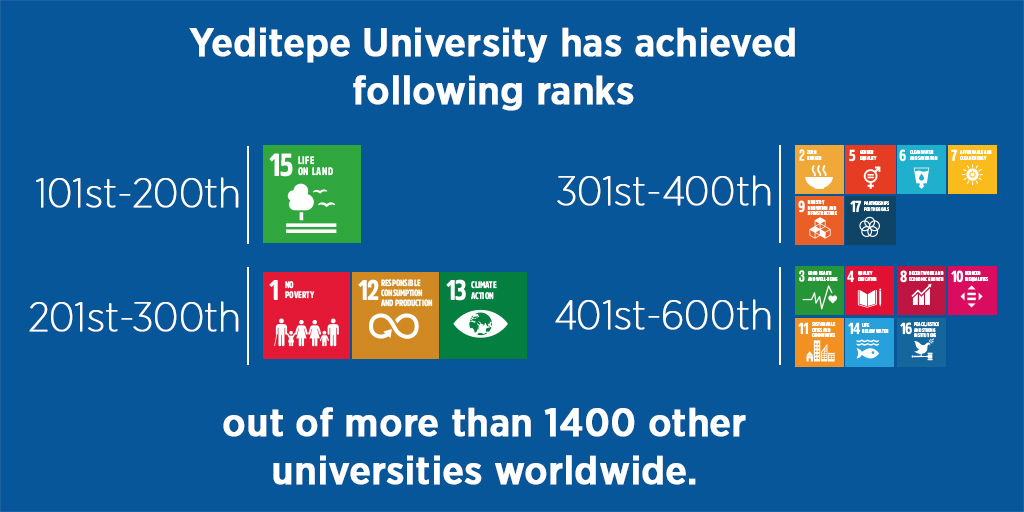
Times Higher Education’s mission is to be the definitive source of data, insight and expertise on higher education worldwide. It is built on 10 million datapoints from 2,500 institutions in 93 countries; on unrivalled news, insight and intelligence; and on a relationship of trust with universities spanning 50 years. Yeditepe University is ranked high and aspires to be even higher on every category of this ranking system, as it is the case for other similar systems.
WHAT ARE TIMES HIGHER EDUCATION RANKINGS?
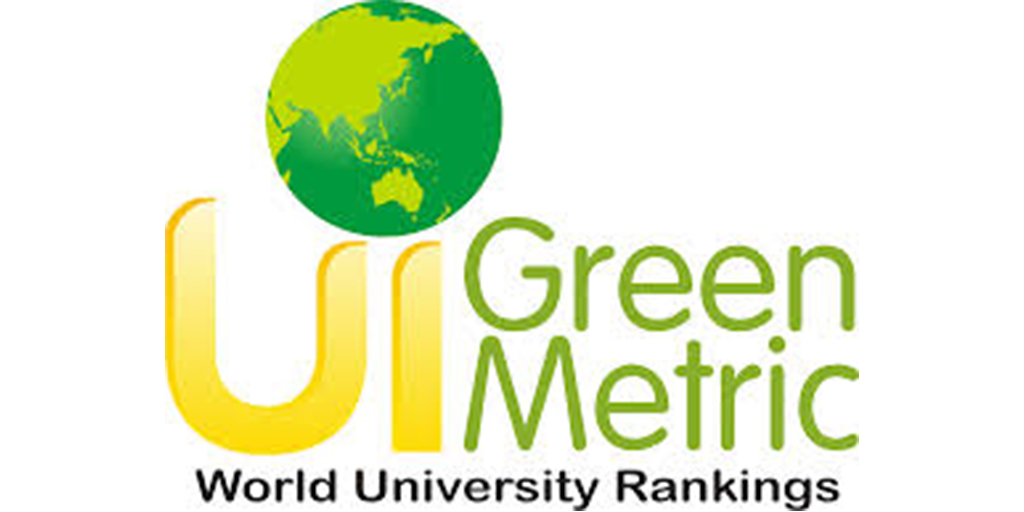
According to 2021 results; Yeditepe University is ranked 115th amongst 956 universities world-wide, which makes it 7th best university in Turkey. This was a remarkable leap forward considering our university is ranked; 273rd amongst world-wide, and 12th in Turkey the year before.
WHAT ARE UI GREENMETRIC RANKINGS?
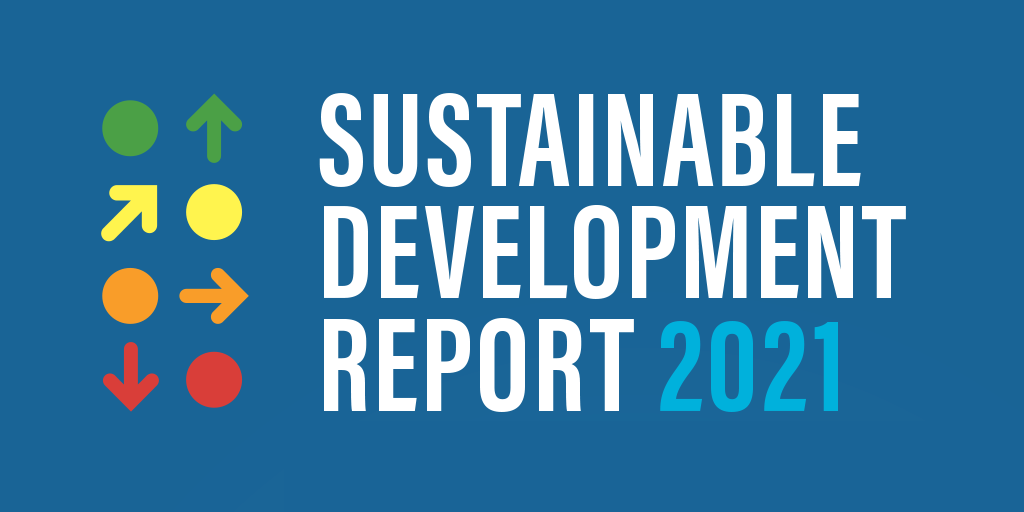
The Sustainable Development Report 2021 presents the SDG Index and Dashboards for all UN member states including Turkey, outlines the short-term impacts of COVID-19 on the SDGs, and describes how the SDGs can frame the recovery. It was prepared by teams of independent experts at the Sustainable Development Solutions Network (SDSN) and the Bertelsmann Stiftung.
LET'S ANALYZE THE REPORTS
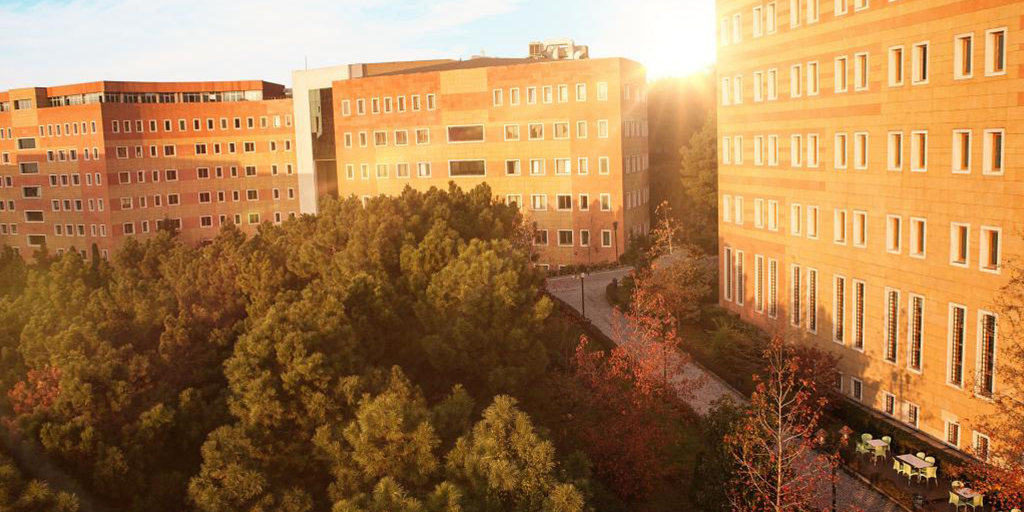
Yeditepe University, within the framework of the “Sustainable Environmental Policy“, has adopted continuous improvement as a pioneering educational institution aiming international recognition and respectability in the fields of education, scientific research and social service, while focusing on environmental awareness and sustainability issues.
GO TO SUSTAINABILITY REPORT
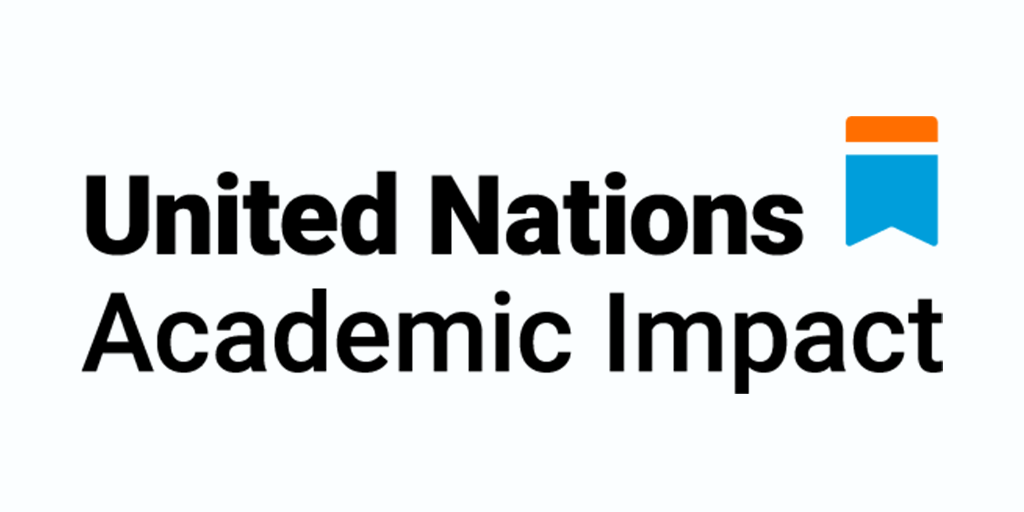
Yeditepe University is a member of the United Nations Academic Impact (UNAI)! UNAI is consisted of 1500 institutions in 147 countries who are working with the United Nations to promote global priorities, including peace, human rights, and sustainable development.
MEMBERSHIP DOCUMENT